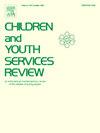Psychological effects of the COVID-19 pandemic: Anxiety among high school students in Rafsanjan, 2021
IF 1.7
2区 社会学
Q1 FAMILY STUDIES
引用次数: 0
Abstract
Background
The COVID-19 pandemic, which was first identified in Wuhan, China, has significantly exacerbated psychological problems, particularly anxiety. This study aims to examine the impact of the COVID-19 pandemic on anxiety levels among high school students in Rafsanjan, Iran, in 2021.
Methods
This cross-sectional study was performed on 563 high school students. The Corona Disease Anxiety Scale (CDAS) questionnaire was used to collect data. To distribute the questionnaires, researchers visited schools and provided hard copies to selected students. Additionally, some participants completed the questionnaire via a link sent through email, Telegram, or WhatsApp. Statistical analyses included Mann-Whitney U test, Kruskal-Wallis, independent t-tests, one-way ANOVA, and Pearson/Spearman correlation tests, and multivariate linear regression model.
Results
Among the 563 high school students (83.5 % were girls, mean age = 17 years), 17.4 % had a history of COVID-19 infection. Additionally, 23.8 % reported infection or death among family members, 32.3 % among first-degree relatives, and 35.9 % among friends or classmates. Male students and older age groups exhibited significantly higher anxiety levels (p < 0.05). Personal experiences with COVID-19 were significantly associated with increased Total anxiety score (p < 0.05), while physical symptoms had minimal effect. These findings highlight the substantial psychological burden of the pandemic on students.
Conclusion
This study emphasizes the urgent need for targeted mental health interventions that take into account factors such as age, gender, and personal experiences with COVID-19. These findings are essential for developing effective strategies to reduce the psychological impact of the pandemic on students.
2019冠状病毒病大流行的心理影响:拉夫桑詹高中生的焦虑,2021年
首先在中国武汉发现的COVID-19大流行严重加剧了心理问题,特别是焦虑。本研究旨在研究2019冠状病毒病大流行对2021年伊朗拉夫桑詹高中生焦虑水平的影响。方法对563名高中生进行横断面调查。采用冠状疾病焦虑量表(CDAS)进行数据收集。为了分发调查问卷,研究人员走访了学校,并向选定的学生提供了纸质问卷。此外,一些参与者通过电子邮件、电报或WhatsApp发送的链接完成了问卷。统计分析包括Mann-Whitney U检验、Kruskal-Wallis检验、独立t检验、单因素方差分析、Pearson/Spearman相关检验和多元线性回归模型。结果563名高中在校生中,女生占83.5%,平均年龄17岁,有新冠病毒感染史的占17.4%。此外,23.8%的家庭成员报告感染或死亡,32.3%的一级亲属报告感染或死亡,35.9%的朋友或同学报告感染或死亡。男学生和年龄较大的群体表现出更高的焦虑水平(p <;0.05)。感染COVID-19的个人经历与总焦虑评分升高显著相关(p <;0.05),而身体症状的影响最小。这些发现突出表明,大流行给学生带来了巨大的心理负担。结论本研究强调,迫切需要有针对性的心理健康干预措施,考虑年龄、性别和个人COVID-19经历等因素。这些发现对于制定有效战略以减少大流行对学生的心理影响至关重要。
本文章由计算机程序翻译,如有差异,请以英文原文为准。
求助全文
约1分钟内获得全文
求助全文
来源期刊

Children and Youth Services Review
Multiple-
CiteScore
6.30
自引率
6.10%
发文量
303
期刊介绍:
Children and Youth Services Review is an interdisciplinary forum for critical scholarship regarding service programs for children and youth. The journal will publish full-length articles, current research and policy notes, and book reviews.
 求助内容:
求助内容: 应助结果提醒方式:
应助结果提醒方式:


